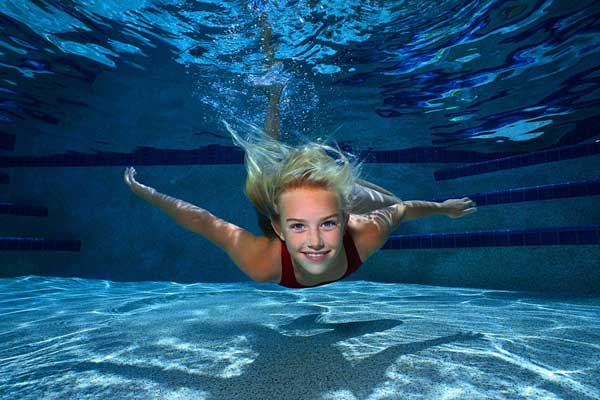Follow the helpful tips below for healthier swimming in Western Australia’s rivers and beaches.
1. Avoid swimming after heavy rainfall (>10mm).
After heavy rainfall (>10mm) rain collects pollutants from our streets, gardens and farms, before it flushes into our ocean and rivers via the storm water systems. This can increase bacterial levels in the water and make the water unsafe for swimming, especially if you put your head under or swallow the water.
As a precaution people should avoid swimming:
- 1 day after heavy rainfall (>10mm) in coastal waters.
- 3 days after heavy rainfall (>10mm) in river/estuarine systems.
2. Do not swim in water that looks discoloured, murky, or smells unpleasant.
Murky, discoloured or smelly water is a clear sign that something might not be right in the water and you should avoid swimming if you notice any of these signs.
3. Look for posted warning signs and follow the advice on them.
When pollution is detected in a water body (e.g. after a sewage spill or algal bloom) health warning signs may be installed to warn the public not to use the water. If you notice a health warning sign then follow the advice and do not go swimming.
4. Avoid swallowing water or putting your head under water if you are unsure about its quality.
If a waterbody is polluted with bacteria or algae you will increase your risk of getting ill if you swallow the water. If you are unsure about a particular waterway you should not put your head under the water because you may end up swallowing some water and get sick.
5. Avoid swimming if you have an open wound or infection.
If you have an open wound or infection and go swimming in water that is polluted your infection may become more infected! Reduce your risk and do not go swimming if you have an open wound or infection.
6. Do not add to the risk; use appropriate toilet facilities.
Make sure you use proper toilet facilities when you need to go to the toilet. Do not put yourself or others health at risk by using natural waterways as a toilet.
7. Take children on bathroom breaks regularly.
Young children need to be taken on regular toilet breaks so they do not use our natural waters as a toilet.
8. Don’t swim if you are feeling ill (diarrhoea or vomiting).
You will put yourself and other swimmers health at risk if you swim while feeling ill, particularly gastroenteritis symptoms such as diarrhoea or vomiting.
9. Dispose of human waste hygienically when boating.
It is important that you dispose of your toilet wastes properly and not near areas where people go swimming. Follow advice from the Department of Transport on waste disposal from boats.
10. Avoid swimming in warm, slow moving, stagnant water or next to stormwater drains.
Warm, slow moving, stagnant water is a sign that you should not go swimming. Such conditions can promote the growth of algal blooms and amoebic meningitis.
(Source: Government of Western Australia – Department of Health)










